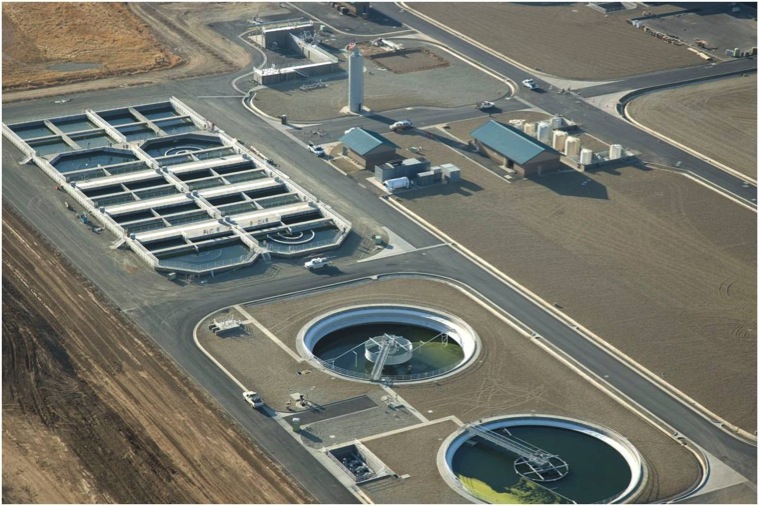When a government or agency decides they need a new facility, they are deciding to enter into an often long, arduous, and expensive process.
- A facility is designed.
- Those plans are sent to contractors for bids.
- The facility then goes into the construction phase with the selected “Low Bid” contractor.
- Change orders come in during the construction as contractors try to reconcile architects’ and engineers’ designs.
- The agency decides to either operate the facility publicly, or outsource services. If they decide to outsource, they request proposals for operating firms.
- Another round of changes is usually inserted here, further inflating the overall project cost.
- After dozens of months, thousands of staff hours, and millions of dollars, the facility goes online.
This is the near-dogmatic approach to public works projects.
But some in California have decided to move away from that arcane structure and have engaged companies specializing in design-build, or even design-build-operate formats. Under this approach, one company handles a project from design through to either construction completion or even into the operational phase.
In Placer County, officials have grappled with a growing wastewater emergency for years. The antiquated Sewer Maintenance District 1 (SMD1) was constructed in 1961 and no longer complies with federal regulations. In 2008, the treatment plant faced a cease-and-desist order due to regulations controlling the amount of pollutants that could be released into streams. The price tag for upgrading SMD1, like many water treatment projects, is hefty.
“Local governments have experienced a threefold increase in costs of constructing new sewage treatment plants and upgrading existing plants over the last 10 to 15 years,” wrote Placer County Supervisor Jim Holmes. “More stringent regulations are big factors behind the increase, along with inflation and rising costs for materials and labor.”
Even though three years ago the Sacramento Business Journal said the County faced “imminent deadlines,” not even a cornerstone has been laid on construction of the new pipeline, and no work has been done to upgrade the existing facility. And over the years, the price tag has increased. The regional option requires the construction of a [15 mile] pipeline and to purchase capacity in a neighboring wastewater facility, which is estimated to cost $92 million, according to Placer County Chairman Robert Weygandt. Alternatively, Placer County is considering upgrading their existing wastewater facility for an estimated cost of $63 million.
“We’ve been working on the regional facility concept since 1997 or 1998,” said Jim Durfee, Placer County’s Director of Facility Services during an interview with PublicCEO. “We’ve gone through lots of iterations of analysis and design concepts. So this is essentially the same issue we brought before the Board (of Supervisors) in 2008.”
Since then, the County was able to negotiate for a new operating permit for its facility that will expire in 2015, when a new facility will have to be in place. There are also several other benchmarks along the way, such as the December 31st deadline to award a contract to either the upgrade or regional facility pipeline.
However, the years of delays have already left the County exposed not only the increased cost of construction, upgrades, or financing, but to fines as well.
“We are facing minimum mandatory penalties right now,” said Durfee. “They are the fines for not meeting the (water quality) standards.”
So in Placer, the county’s government isn’t only responsible for the cost, but also for invoking the ire of its residents if the project goes over budget or underperforms in quality.
However, another option to the wastewater project has been under consideration since April 2010. Placer County has accepted a detailed proposal from PERC Water that calls for an entirely new facility to be built at a definitive cost of $51 million. That proposal offers cost and operational guarantees, extensive design, and financing for a new water recycling facility as opposed to an upgrade..
According to PERC Water, their proposal – called a Customized Design Report (CDR) – offers Placer County a way to insulate themselves from cost over runs, project delays, and actually could deliver a fully functional facility 17 months sooner than the planned upgrade and save the County about $12 million.
“Given the high level of uncertainty in our industry, we developed our unique CDR approach so clients would have certainty of cost, schedule and performance for mission critical infrastructure at a very early stage of design,” said Brian Cullen, president of PERC Water during an interview with PublicCEO. “In the absence of a CDR, local governments are forced to rely on estimated costs to make decisions on major capital projects, which is a very expensive and high risk proposition that is loaded with uncertainty.”
Placer County will weigh the different options on Wednesday, December 6 at the Board of Supervisors meeting. Whether or not they will move forward with PERC Water’s CDR, the proposed upgrades, or the regional pipeline and facility isn’t currently known.





